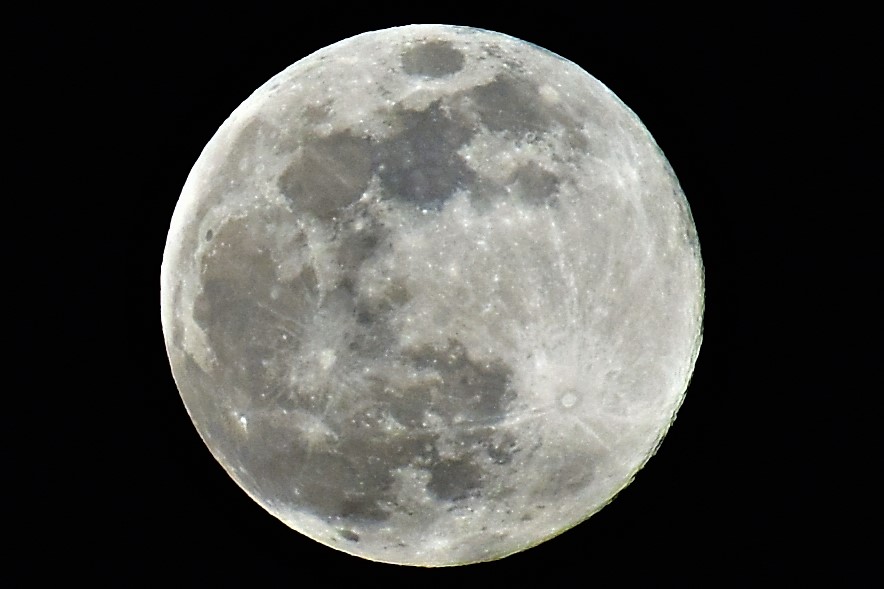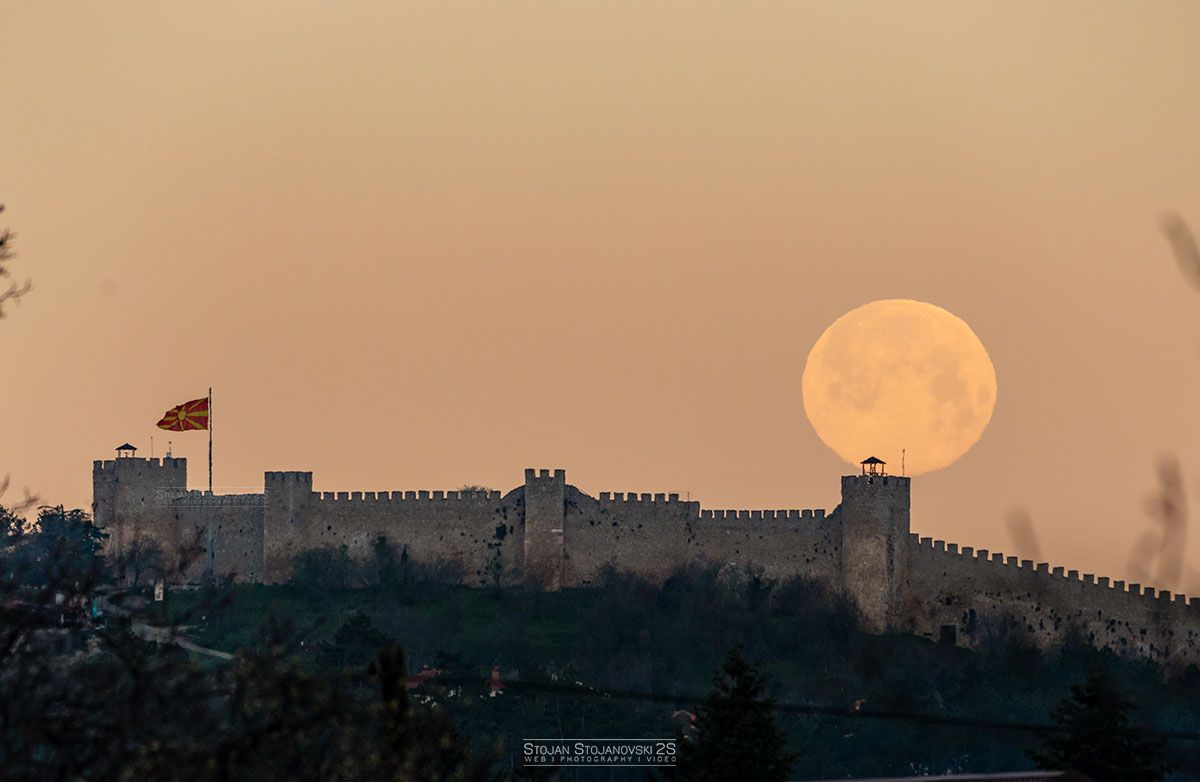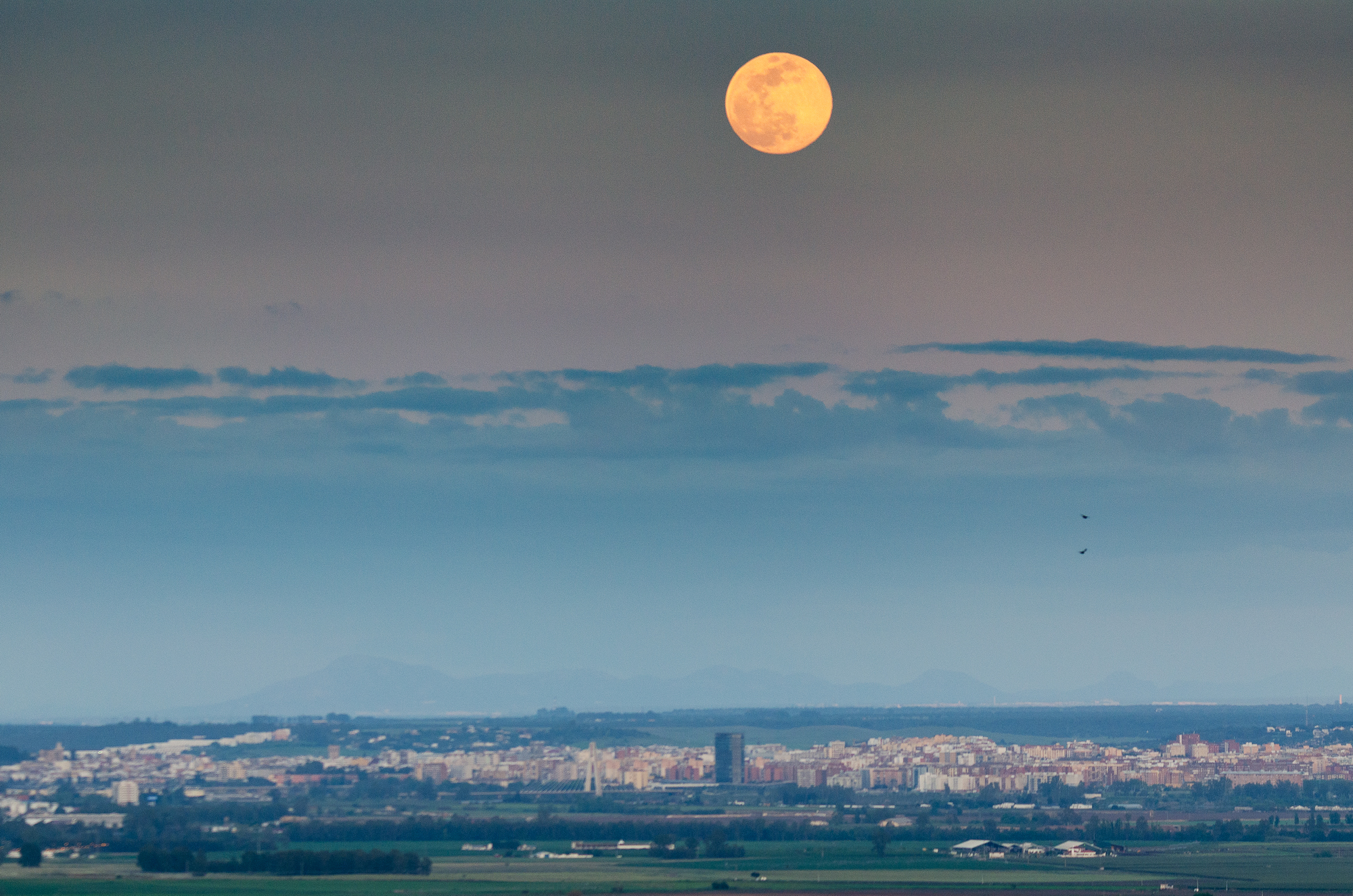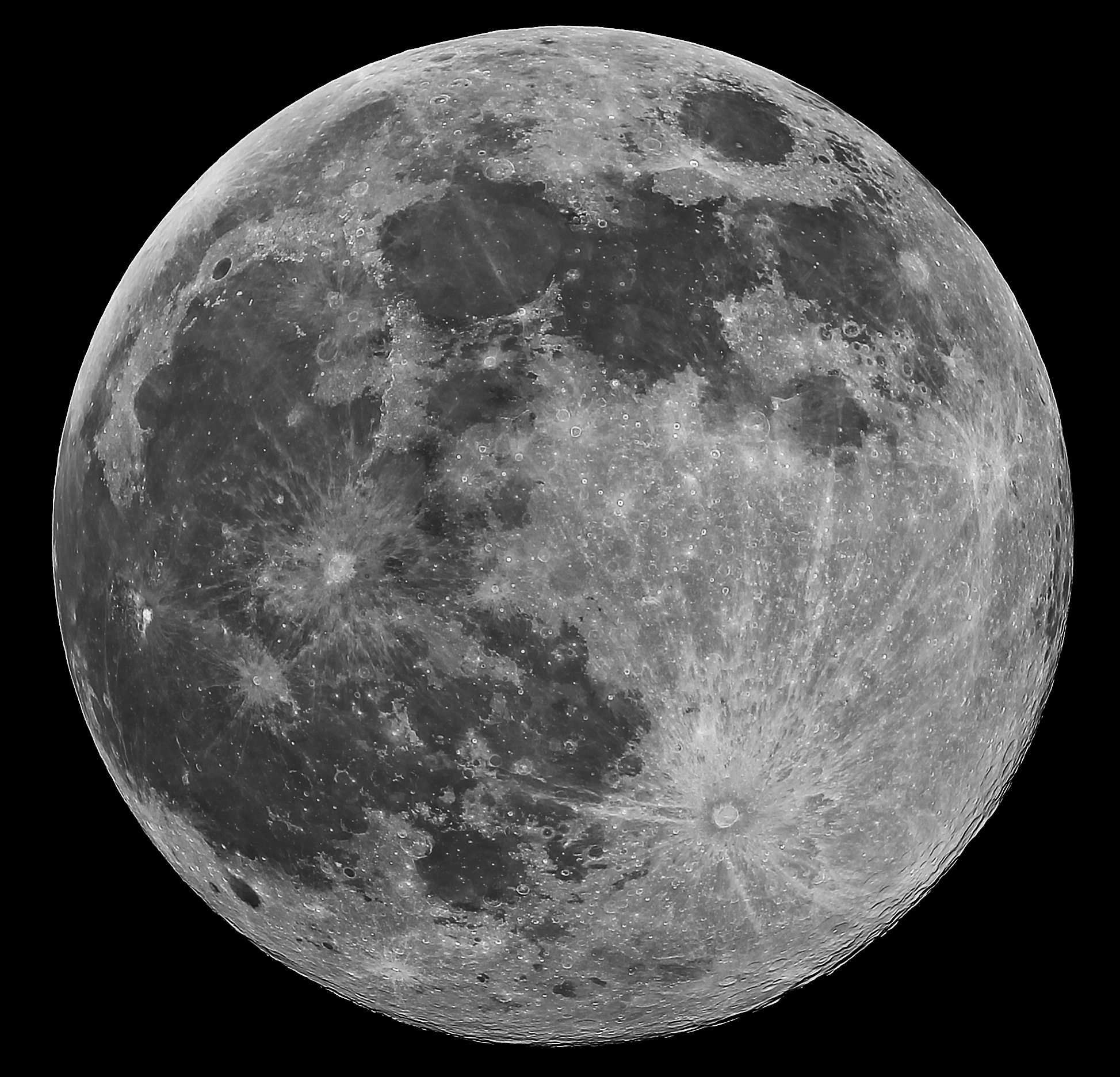'Super Pink Moon,' the biggest & brightest of 2020, stuns skywatchers around the world (photos)
The photos capture the beauty of the 2020 "Super Pink Moon."
The full moon on Tuesday night (April 7) was the biggest "supermoon" of the year and skywatchers, at least those with clear skies to see it, are thrilled.
Dubbed the "Super Pink Moon," this full moon appeared larger and brighter than usual because the moon was at perigee, or the closest point to Earth in its elliptical orbit. With this ultra-close event, the moon was just 221,772 miles (356,907 kilometers) from Earth, compared to its average distance of 238,855 miles (384,400 km). The moon (while not actually pink) was at its absolute closest at 2:08 p.m. EDT (1808 GMT), about 8.5 hours before it became officially full, at 10:35 p.m. EDT (0235 GMT on April 8).
This closer proximity of the supermoon makes it appear about 7% larger and 15% brighter than the average full moon, giving skywatchers an opportunity to admire the moon's face in all its lunar glory.
Related: Supermoon secrets: 7 surprising big moon facts
More: Activities and resources for homebound kids: A coronavirus guide

Have an amazing supermoon video or photo you'd like to share? You can submit images and comments in to spacephotos@space.com!
In this image taken by photographer Bill Funcheon, the brightness and closeness of the moon make the structures on its surface stand out. Even with the naked eye, you can easily spot craters and basins during a supermoon. However, because full moons are so bright, moon filters are recommended for anyone trying to photograph the moon through a telescope.
Related: How to observe the moon (infographic)
The moon looks even larger during moonrise and moonset, when it's close to the horizon, because of an optical illusion. But its angular diameter, or apparent size, is not actually bigger. Rather, we see this illusion because objects on the horizon, like buildings and trees, create a sense of scale that is missing when the moon is high in the sky. Still, because of this illusion, photographers captured the moon looking anywhere from slightly bigger to absolutely gigantic peeking out over the horizon.
Get the Space.com Newsletter
Breaking space news, the latest updates on rocket launches, skywatching events and more!

Additionally, while the size of the moon may look different depending on where it is in the sky, the moon can also look different colors (even though it doesn't change color).
You can see the moon appearing as if it's different colors in some of these photos, like this photo of the Super Pink Moon taken by photographer Stojan Stojanovski. The image shows a yellowish moon over Samuel's Fortress in Ohrid, North Macedonia.
However, the moon itself does not change color. It only appears to be different colors when it is obscured by atmosphere (or during an eclipse). This also means that, as you can probably tell, the moon doesn't turn pink for the "Super Pink Moon." That name actually comes from a pink wildflower that blooms in the early spring in North America.

On Tuesday night, people from all over the world got a front-row seat to this incredible Super Pink Moon. Skywatchers from every corner of the globe, weather permitting, enjoyed a special and unique astronomical moment.
This image from photographer Sérgio Conceição shows what the pink supermoon looked like from Elvas, a Portuguese municipality. In the image, Conceição pointed out that you can see both Elvas and Badajoz, a city in Spain, in the photo.

This striking photo taken by photographer Chris Crowe, who is also the head of astronomy at Harrow School in the UK, took this stunning photo of theSuper Pink Moon from the Rayleigh Observatory in London.
With the extra-close, extra-bright moon and some astrophotography techniques, Crowe was able to capture an image that shows the moon's curves, lumps and bumps in sharp detail.
Editor's note: If you have an amazing supermoon photo you'd like to share for a possible story or image gallery, you can send images and comments in to spacephotos@space.com.
- How the 'supermoon' looks (infographic)
- How to observe the moon with a telescope
- Supermoon and pink sky: Full moon rises against 'Belt of Venus'
Follow Chelsea Gohd on Twitter @chelsea_gohd. Follow us on Twitter @Spacedotcom and on Facebook.
OFFER: Save 45% on 'All About Space' 'How it Works' and 'All About History'!
For a limited time, you can take out a digital subscription to any of our best-selling science magazines for just $2.38 per month, or 45% off the standard price for the first three months.
Join our Space Forums to keep talking space on the latest missions, night sky and more! And if you have a news tip, correction or comment, let us know at: community@space.com.

Chelsea “Foxanne” Gohd joined Space.com in 2018 and is now a Senior Writer, writing about everything from climate change to planetary science and human spaceflight in both articles and on-camera in videos. With a degree in Public Health and biological sciences, Chelsea has written and worked for institutions including the American Museum of Natural History, Scientific American, Discover Magazine Blog, Astronomy Magazine and Live Science. When not writing, editing or filming something space-y, Chelsea "Foxanne" Gohd is writing music and performing as Foxanne, even launching a song to space in 2021 with Inspiration4. You can follow her on Twitter @chelsea_gohd and @foxannemusic.










